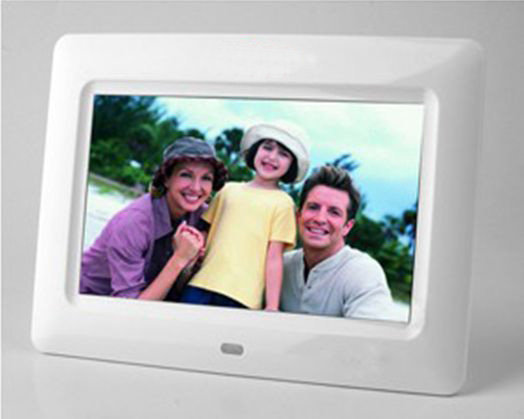

As noted, this is a wide-screen display while the majority of digital cameras shoot standard, 4:3 images. This may simply be due to the native resolution of the display or might have to do with the way the frame scales the image to fit the screen.


We did notice some jagged edges or stair-stepping in angled and curved lines (a model's sloping shoulder, for example). Image quality was generally solid-the pictures were sharp, the colors vibrant, with good detail in darker textures and shadowy elements. On the bottom of the frame you'll find a slot that accommodates SD, MMC, XD, and Memory Stick memory cards, but not Compact Flash cards. There are nine slide show effects to choose from (Fade, Shutter, Cross comb, Mask, Brick, Bar, Dissolve, Expansion, and Silk), as well as "random" and "none." We copied images from a memory card as well as a thumbdrive-and you can connect directly to a computer using the included USB cable. You can, of course, have the frame read photos stored on external memory sources, but if you are dealing with high megapixel counts and large file sizes, the frame can be sluggish. In fact, the frame works best and operates most smoothly with your images stored in internal memory. The frame has 128MB of built-in memory, which is nice to have around for that core set of photos you plan on putting in a slide show rotation. The navigational buttons are on the side of the frame (there's no remote), and while there's nothing overcomplicated about the setup, for some reason we often ended up hitting the wrong button on the four-way directional key and either going nowhere or in the wrong direction. It's not bad, but it's not entirely intuitive, and it'll take you a good half an hour to really get the hang of the menu system. Samsung could stand to do a little work with the interface.


 0 kommentar(er)
0 kommentar(er)
